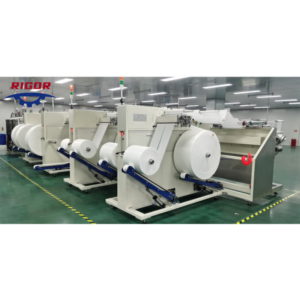Benefiting Businesses With Flow Wrap Machines
Flow wrap machines are a type of packaging machinery that are designed to wrap products in a continuous roll of plastic film, creating a sealed package. These machines offer several benefits to businesses in various industries.
Here are some ways in which flow wrap machines can benefit businesses:
Increased productivity: Flow wrap machines are designed to operate at high speeds and can wrap products quickly and efficiently. This can help businesses increase their productivity and output, allowing them to meet customer demand and increase their revenue.
Reduced labor costs: Automated flow wrap machines require less manual labor than traditional packaging methods, helping businesses reduce their labor costs and improve their bottom line.
Consistent packaging: Flow wrap machines can produce consistent, high-quality packaging for products of various sizes and shapes. This can help businesses maintain a professional image and improve the perceived value of their products.
Improved hygiene and safety: The sealed packaging created by flow wrap machines can help improve the hygiene and safety of products, protecting them from contamination and damage during transportation and storage.
Increased shelf life: The airtight packaging created by flow wrap machines can help increase the shelf life of products, reducing waste and improving profitability for businesses.
Versatility: Flow wrap machines can be used to package a wide range of products, including food items, medical supplies, and consumer goods. This versatility makes them a valuable investment for businesses in various industries.
In summary, flow wrap machines offer a range of benefits to businesses, including increased productivity, reduced labor costs, consistent packaging, improved hygiene and safety, increased shelf life, and versatility. By investing in a flow wrap machine, wet wipes machinery businesses can improve their operations, enhance their product offerings, and increase their profitability.
How do flow wrap machines compare to other types of packaging machinery?
Flow wrap machines are a type of packaging machinery that are designed to wrap products in a continuous roll of plastic film, creating a sealed package. When compared to other types of packaging machinery, such as form-fill-seal machines and tray sealing machines, flow wrap machines offer several advantages and disadvantages.
Advantages of flow wrap machines include:
Versatility: Flow wrap machines can be used to package a wide range of products, including food items, medical supplies, and consumer goods.
Speed: Flow wrap machines are designed to operate at high speeds, making them ideal for businesses that need to package products quickly and efficiently.
Reduced material costs: Flow wrap machines use less packaging material than other types of packaging machinery, helping businesses reduce their material costs.
Consistent packaging: Flow wrap machines can produce consistent, high-quality packaging for products of various sizes and shapes.
Disadvantages of flow wrap machines include:
Limited customization: Flow wrap machines have limited options for customizing the packaging, such as adding graphics or text to the film.
Limited protection: Flow wrap machines provide minimal protection for products, wet wipes manufacturing process making them unsuitable for fragile or sensitive items.
Limited shelf life: The airtight packaging created by flow wrap machines can help increase the shelf life of products but may not be suitable for all products.
When compared to form-fill-seal machines, flow wrap machines offer faster speeds and lower material costs, but may not be suitable for products that require more protection or customization. When compared to tray sealing machines, flow wrap machines offer greater versatility and lower material costs but may not be suitable for products that require a rigid container or airtight seal.
Overall, the choice between different types of packaging machinery depends on the specific needs of the business and the products being packaged.

